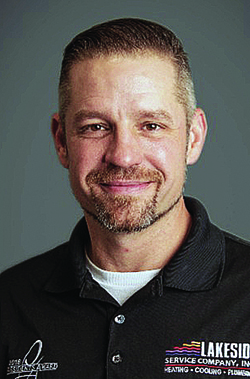At Lakeside Service, we are students of the concepts behind High-Performance HVAC™ Contracting. And though we are a work in progress, the goal is to test and measure as many of the systems we encounter in the field as possible.

Are we there yet? No. But we are setting the groundwork for that by creating processes and procedures within our company to measure how we are doing.
Management Consultant Peter Drucker famously said, “What gets measured gets done.” In management speak, such measurements are called Key Performance Indicators or KPIs.
For me, KPIs are a tool to measure progress toward intended results. But this can be tricky because there are many different things to measure, and I struggled to know what was most important.
Just Get Started with KPIs
The worst thing you can do is procrastinate getting started. We’ve been using KPIs since 2013, but it took bringing coaches from National Comfort Institute (NCI) to help us implement them into our everyday business.
When John Garofalo became our mentor, he showed us the value of KPIs and helped us implement them. It was through NCI that we first heard and understood the phrase, “If you don’t measure, you’re just guessing™.”

over “The Score Card” and discuss with the team goals,
suggested improvements, and ask for suggestions.
Today, we use KPIs for everything from determining career paths for our technicians to creating fair ways to pay different levels of technician skills, tracking our costs, and so much more.
With John’s help, we determined what to measure and how to keep track of it. We also learned to overcome our mindset of keeping numbers close to the vest – we had to share numbers so everyone knew the score.
So, What Should You Measure?
Reading Peter Ducker or listening to numerous management videos on YouTube and elsewhere teaches you that nearly anything can be measured. Typically, from a business perspective, the experts recommend focusing on:
- Revenue and Profit Metrics
- Customer Satisfaction Metrics
- Operational Efficiency Metrics
- Service Agreement Performance
- Safety and Compliance Metrics
- Technician Performance
- Inventory and Supply Chain Metrics
- Environmental Metrics
- Benchmarking and Continuous Improvement Metrics.
Under each of these bullets are many individual indicators you can target.
It was super important for me to keep things very simple at first. For example, in the beginning, we only picked five KPIs per department. We didn’t want to have super granular information. That makes it hard to keep things objective.
Click Below for the Next Page













Recent Comments